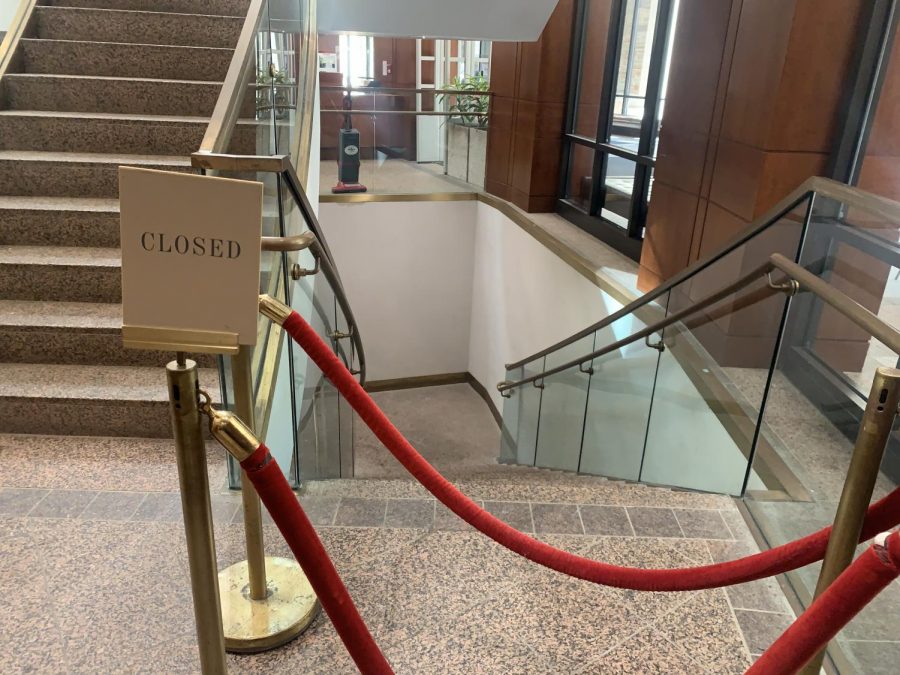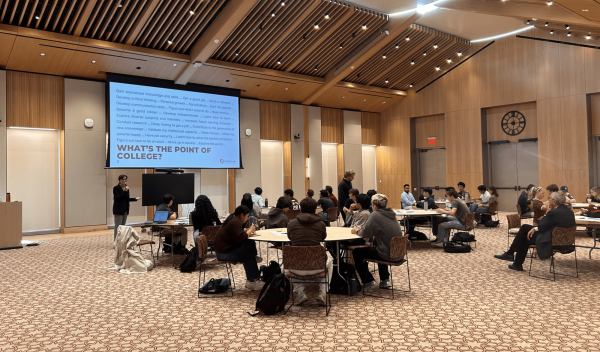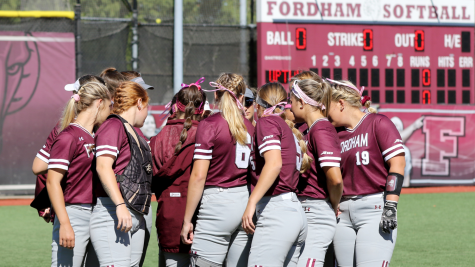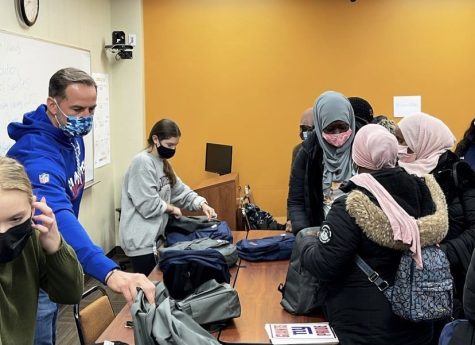Fordham Facilities Sustain Damage From Flash Flooding
The basement floor of Walsh Library remains closed in the wake of flash flooding at the start of Fordham’s fall semester.
On Sept. 1, the first day of Fordham’s fall semester, heavy rain and floodwaters from Tropical Storm Ida damaged facilities across the university’s Rose Hill campus. The damage prompted university officials to cancel in-person classes for the rest of that week and temporarily close some areas on campus.
Fordham Public Safety issued a storm and flash flood warning to the Fordham community at noon on Sept. 1. The email advised students to avoid walking under large trees and through flooded areas during the approaching storm. Videos taken later in the evening by students show storm waters pouring into the basements and ground levels of residence halls, classroom buildings, offices and Walsh Library.
On Sept. 2, the day following the floods, John Carroll, associate vice president of Public Safety, announced that all Fordham campuses would be closed that day. This included various administrative facilities as well as the cancellation of all classes on Sept. 2 and Sept. 3.
The decision to cancel classes directly reflected the significant damage caused to New York City’s transportation infrastructure — including road and subway flooding and the suspension of Metro-North service — as well as the flooding of various classroom buildings, according to Dennis Jacobs, senior vice president of Academic Affairs.
“The decision to close Fordham’s campuses was made in the interest of health and safety and in recognition that many commuting students and faculty and staff could not make it to campus during the two days following Hurricane Ida’s floods,” said Jacobs.
The flooding affected normal operations of Walsh Library, Quinn Library, the Law Library, University Health Services, Counseling and Psychological Services, fitness centers and the intercampus Ram Van shuttle, according to Carroll.
Damage to university facilities varied from building to building.
“McGinley Center did receive some flood damage but mostly recovered,” said Bob Howe, associate vice president for communications. “There was flooding in several other buildings, including Duane, Walsh Residence Hall, Larkin and JMH, but damage was limited and those areas are mostly back in service.”
While many of the buildings that experienced the most flooding have been repaired and are reopened for public use, the most damaged building, Walsh Library, will have limited access until it can fully recover from damages.
“Walsh Library’s ground level was most affected and will be out of service for some time, a couple months at least,” said Howe.
The sheer force of the floodwaters caused extensive damage to multiple facilities within Walsh Library, according to Linda LoSchiavo, the director of libraries at Fordham: after pushing through the existing floodgate, the floodwater rushed into the building through the loading area driveway and a window that had broken due to the pressure and weight of the water slamming against the side of the building.
“Everything in the staff areas (Cataloging, Acquisitions, Serials, the EIC) was under four plus feet of water and destroyed,” said LoSchiavo. “This includes furniture, books, journals, files, PCs, scanners, printers, etc. Almost nothing in any of these departments was salvageable.”
The flood damages also extended to the Flom Auditorium, damaging seats, and the EIC TV studio, making the cameras and equipment inside unusable.
The extensive damages will be incredibly difficult to recover from with the library’s lower level closed indefinitely. Current hopes aim for most of the lower level being reopened by Thanksgiving, explained LoSchiavo.
“The entire lower level must be dried out, the sheetrock that has been pulled from the walls must be replaced, carpets will be replaced, replacements for damaged equipment and furniture must be ordered, delivered and installed,” explained LoSchiavo.
Library staff members who usually work in the damaged departments have been relocated and restaffed to other parts of the library system. However, their original desks (and thus every item and paper file in them) have been completely destroyed. Large quantities of library materials have also been lost to the floods, including new books, reclassified books, various journals and multiple theses prepped for digitization according to the library director.
“Flood waters do not discriminate in their path to destruction,” said LoSchiavo.
LoSchiavo said she was grateful for Fordham’s Facilities Operations Teams and called them “heroes” for stepping in to help restore the library. She also said library staff members have “worked tirelessly” in flooded conditions to salvage what little remained and continue to work.
While the majority of areas sustaining flood damages have been restored well enough to open for service, including academic buildings and residential halls, it may take months for Fordham University to be restored to its pre-flooding conditions.

Sebastian Diaz is a senior from Chapel Hill, N. C. who is double majoring in journalism and film. After starting as a news reporter for The Fordham Ram...















































































































































































































